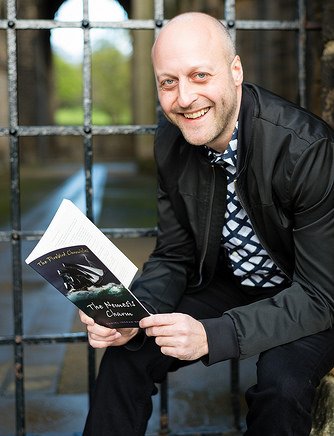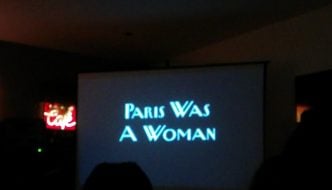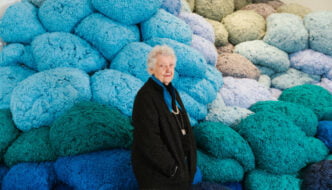
Photo Credit: Raj Passy
Ahead of his book launch for the second book in the Firebird Chronicles: The Nemesis Charm, I had the opportunity to interview Yorkshire based writer, Dan Ingram-Brown, about his books and writing process.
You write fantasy books for children. How were you inspired to come up with the concept of the World of Mortales and Blotting Academy where story characters are trained?
I’ve lived with the characters Fletcher and Scoop for a long time. I first started working with them back in the early 2000’s, as characters for children’s holiday clubs (they had different names back then). At that time, I was interested in the idea of parables – those ancient stories that give us clues as to how best to live. I was intrigued by the question of what might happen if the fictional characters from those stories – the lost son, the merchant who searches for a pearl of great worth, the personifications of Wisdom and Folly – bumped into characters from modern children’s literature, for example Alice, Pinocchio or Harry Potter. That’s where Fullstop Island came from; it was a world in which these fictional creations from different eras might collide. I think I was reading Salman Rushdie’s Haroun and the Sea of Stories at the time, which influenced how the idea was shaped.
Since then, I’ve been interested in how stories work, why they’re so important to us – I think it’s amazing that we tell stories at all, that we have the capacity to imagine a series of events that isn’t happening now. Humans are the only creatures who have that capacity. And we all have it. There isn’t a culture in which stories aren’t important, and there isn’t an age group which doesn’t interact with them. There’s something about stories that makes us human, they connect us. I think it’s fascinating that stories seem to shape themselves around certain patterns and themes. The fact that we generally feel stories should resolve in some way is also at the heart of Fletcher and Scoop’s world. It’s as if there’s an unseen hand guiding stories to their conclusions. In that sense, the world of Mortales is a benevolent world. There are struggles to face, there is darkness to overcome, but in the end, all things will be made right.
Was it an idea that you mulled over for many months, years, or did you have to rush out to get a notepad and pen one day to get the story down?
I’m definitely someone who mulls over stories for a long time. I do jot notes down on my phone when they occur to me, and there are times when the ideas spill out and I get lots down at once. But that tends to be the result of lots of mulling and learning – not necessarily about stories specifically, just about life in general. For me, writing stories is a way of expressing some of the things I’ve learnt or am learning. It’s also part of the process of learning itself. It helps me to crystallise things, to name them.
Setting plays an important role in your books and community writing projects. What comes first? Setting or characters, or is it a mixture of the two?
Setting is really important for me. In some sense, I think space itself is a character – it has a real impact on what happens. People act differently in cities to how they act in small market towns (I’ve lived in both). It’s a symbiotic relationship – settings and characters shape each other. I think when I write, there’s an intuitive connection between the two. I’m not sure which comes first, they’re a package.
You mention real world places in your book. Did you spend times at these places, and do you enjoy mapping the landscape of your fictional world?
I did spend time in those places. I lived near Kirkstall Abbey for a few years (in fact, I got engaged in the Abbey grounds). I always found it interesting – an in-between place, as I say in the book. It seemed like a good place for Libby to make the jump between worlds, as it exists between worlds itself – between the past and the present and between the sacred and secular. It can change quickly too, from being beautifully light to moody and shadowy.
I’ve visited Mudeford a couple of times. The first was for a performance project in which a group of us travelled along the south coast in an old, red postal van looking for the bones of a fictional pirate (the story of our journey became a play performed at the Edinburgh Fringe Festival. The fictional pirate developed into the Dark Pirate in the Nemesis Charm). My parents and sisters live down south, so I’ve been able to visit there since, with this story in mind.
I do enjoy mapping the landscape of my fictional world. I have various maps of Fullstop Island and the Oceans of Rhyme, some of which disagree. I quite like that. I don’t like things to be too tidy – stories aren’t always tidy. The illustrated maps in the front of the books try to catch that idea – they’re a bit messy or not quite finished. The story is still being told, after all – the world is still being spoken into existence, so it’s not all fixed.
The Firebird Chronicles is a fantasy series. You have the first two available in paperback: Rise of the Shadow Stealers, and The Nemesis Charm, and you have an audio version too. Are there more books to follow soon, or do you still have to write them?
There’s one more book to come. I’m yet to write it, although I know how the series is going to end, and I know some of the landmarks along the way. I’m looking forward to starting to plot the exact route this summer – there’s sure to be plenty to discover!
What’s next in your world of fiction?
At the moment, I’m working on three short stories set in Fletcher and Scoop’s world. I’ve also just finished writing an adaptation of Wind in the Willows that’s going to be performed this summer along the river in Knaresborough. If you want to hear more about these, come and say hello on social media – I’ll post updates there, and I’m always up for a good chat too!
For more information or to contact Dan, you can find the details here. The Nemesis Charm is released on 27/05/16.




Comments